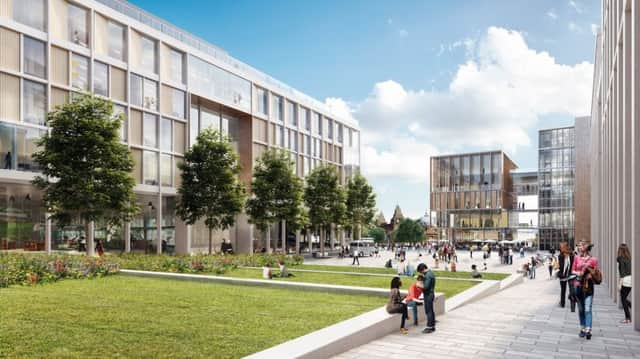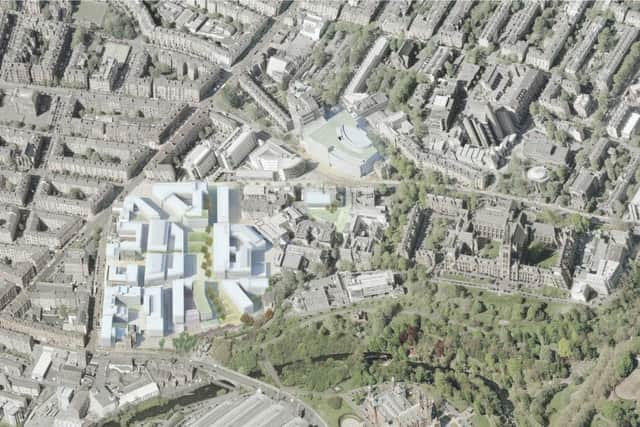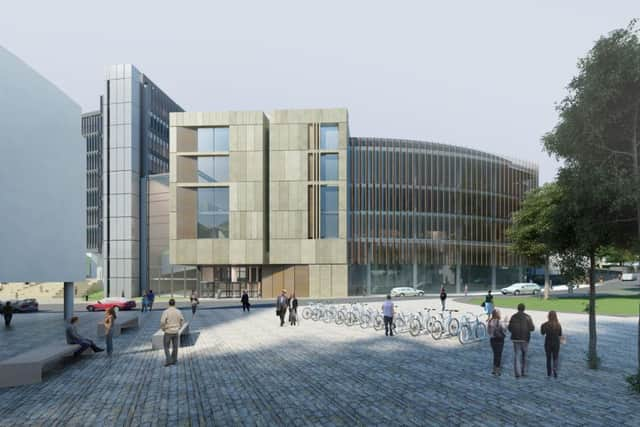Glasgow University expansion will transform city's West End


Detailed proposals submitted to planning chiefs last week reveal almost all of the existing hospital buildings will be demolished to make way for a research and innovation hub.
A new public square will also be built close to Kelvin Hall, allowing pedestrians a new route to reach Kelvingrove Park from Byres Road.
Advertisement
Hide AdAdvertisement
Hide Ad“The planning application represents the next step in our campus development but also offers opportunities for local business and the community,” a university spokeswoman told The Scotsman.


“This is about a major investment in the west end of Glasgow and it should benefit everyone.”
The campus project, one of the biggest education developments in Scotland, will see an estimated investment of £1 billion over 10 years – higher than the public investment in the 2014 Commonwealth Games.
It is anticipated that 2,500 jobs will be created during the construction period.


The Western Infirmary closed to patients in 2015 following the completion of the new Queen Elizabeth University Hospital in Govan.
An pre-emption clause signed in 1878 ensured the university would have first refusal to buy the site if the hospital ever relocated.
Parts of the old hospital will survive. Five listed buildings - the chapel, outpatient building, Macgregor building, the Tennent Institute and Anderson College - will be refurbished as part of the development.
New buildings for social sciences, the Institute of Health and Well-being and the School of Science and Engineering will be constructed along with shops, bars, a hotel and residential blocks.


Advertisement
Hide AdAdvertisement
Hide AdDemolition of the hospital site could begin later this year, with the masterplan expected to be complete by 2026.
Professor Anton Muscatelli, university principal, said: “Since the university moved to Gilmorehill in 1870, we have developed a number of iconic buildings, including, of course, the Gilbert Scott building. The facilities we built during the late 19th and early 20th centuries provided a fantastic environment for University of Glasgow researchers, who won seven Nobel prizes and many other accolades.
“We hope to use the new site as a catalyst to attract and grow the very best academics, to attract the very best students and to ensure that Glasgow continues to be one of the top universities in the world.”
He added: “The first major development will be a Learning and Teaching Hub – situated not on the former Western Infirmary site but on University Avenue. It will provide spaces for 3,000 students at any one time, as well as state-of-the-art facilities, and will allow us to use the latest techniques in pedagogy.”


The masterplan is the second major construction project in the area. Work began in 2014 to convert the nearby Kelvin Hall into additional space for the Hunterian Museum as well as a new home for the National Library of Scotland Moving Image Archive.